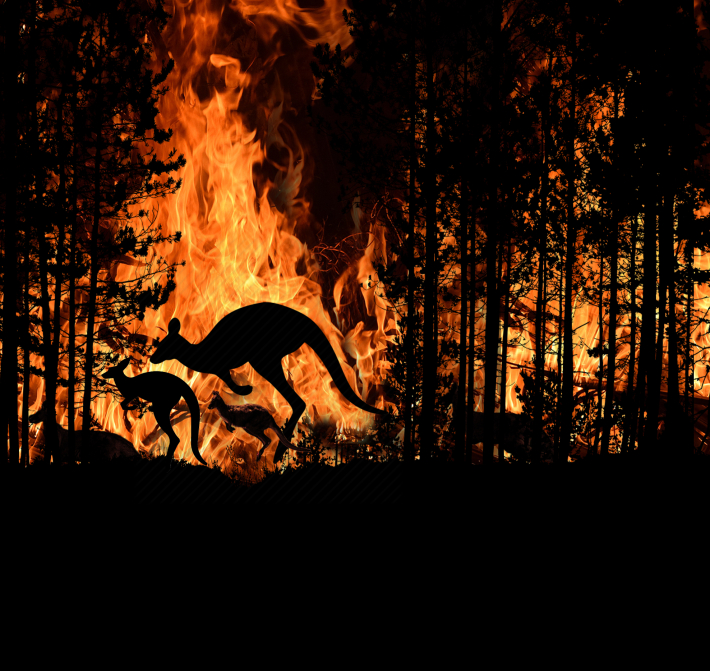
Now that the worst of Australia’s terrible bushfire season is over, it is time to reflect on whether any good may come of the experience. If so, it could be something of importance to us all: another reality check for the climate change denialists – especially those who reject the link between climate change and human activity.
In a recent article about the wildfires, a source from Chatham House described Australia as “…a country known for climate denial and division”. It’s a matter of public record that the current Prime Minister is of that disposition. His deputy once described climate activists as “raving inner-city lefties”. Well, that’s clear then!
We can now add to that mix the experience of two severe and consecutive European windstorms. Storm Dennis has been described as “one of the most intense extratropical cyclones ever recorded”, and it came less than a week after Storm Ciara, which was nearly as bad.
Now there is a solid and independent scientific consensus that climate change has human causes, is accelerating dangerously and the window of opportunity to do something about it is closing fast. But the problem is a lack of hard, incontrovertible evidence, which is definitive enough to overcome cynicism and powerful vested interests in doing nothing. That would be the smoking gun.
Australian wildfires are, in large part, a normal function of the climate. They are associated with hot, dry weather and periods of drought and strong winds.The worse those three factors get, the worse the fires naturally tend to be – in an environment that is inherently fire-prone. And, to some extent the environment shows that natural and evolutionary adaption to periodic wildfires has taken place.
But there is also the big picture. Australia has been getting inexorably hotter and drier for some time (a very long time according to some sources – as in millions of years). So, the issue with post-industrial global warming is the extent to which it is exacerbating fire risk in an already stressed and vulnerable ecology.
To understand this fire risk more generally – in terms of its expected size, severity and frequency - needs a lot of specialist knowledge and modelling. We need to know what effect climate change it is having on the likelihood of this risk and on the type and severity of the impacts it can cause. The same can be said for climate-related risks closer to home. Otherwise, we might just continue to be taken by surprise by the new records set by the next extreme climate event.
This brings us to the great work of an organisation called World Weather Attribution (WWA). Their website can be accessed here.
They may not have talked to an image or brand consultant before choosing their name, but their work is something all disaster managers should be aware of. It might even become a game-changer in the long run.
World Weather Attribution is all about cause and effect. In their own words, they have been, since 2015:
“conducting real-time attribution analysis of extreme weather events as they happen around the world. This provides the public, scientists and decision-makers with the means to make clear connections between greenhouse gas emissions and impactful extreme weather events, such as storms, floods, heatwaves and droughts”
It’s a complex form of analysis which is akin to big data techniques - combining multiple modelling tools, observational data, research findings and formal reports. The approach is rigorous, science-based, peer-reviewed, innovative and – so far – conclusive. Just to put WWA’s credentials and independence beyond doubt, the initiative is a joint and international project between six highly eminent academic research institutes (including the University of Oxford) and other science partners.
The WWA’s most recent outputs include 3 studies of extreme weather events that happened in 2019: Tropical Storm Imelda, the July European heatwave and the French heatwave in June. You can access each of these and others on the WWA website, and read them in summary or in the full, technical version. But the key findings are (in their own words):
“…the extreme rainfall and flooding caused by Tropical Storm Imelda was made more likely and intense due to global warming”.
“Over France and the Netherlands, such temperatures would have had extremely little chance to occur without human influence on climate (return periods higher than ~1000 years)”.
“Every heatwave occurring in Europe today is made more likely and more intense by human-induced climate change”.
In all three cases they have found the unmistakeable “signature” of human influence and have backed it up with enough evidence to give their conclusions a very high level of confidence. Also, the analytical techniques and the science behind them are improving all the time. Before very much longer we will have our definitive and undeniable smoking gun, and much of the credit for that will lie with WWA.
But it’s not just about attribution. This work will also help us to understand the changes better – so that we can model what future extreme events will look like, how their likelihood is changing and how their impacts will change. This should make our risk assessments more accurate and therefore more effective.
So, to bring the analysis closer to home, WWA carried out a study of Storm Desmond. This hit the UK in December 2015, closely followed by Storm Eva. Their conclusion was that an event of the magnitude of Desmond (an extratropical cyclone like Ciara and Dennis) is now 60% more likely due to human-induced climate change and they predicted a return period of approximately five years (equating to a 20% chance of occurring in any given year). It’s circumstantial, but strangely compelling, that Ciara and Dennis came along four years after Desmond and Eva.
Back to Australia. Next up from WWA will be their report into the Australian bushfires. They are working on it now and we can expect publication in March 2020. We’ll flag it up and summarise when if comes out.